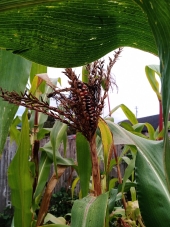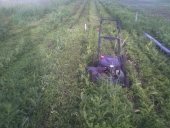
 3
3




New location. Zone 6b, acid soil, 30+ inches of water per year.
https://growingmodernlandraces.thinkific.com/?ref=b1de16
Growingmodernlandraces.com affiliate
 3
3




If there is one thing the Wizard of Oz has taught me, it is not to trust school teachers on bicycles.




New location. Zone 6b, acid soil, 30+ inches of water per year.
https://growingmodernlandraces.thinkific.com/?ref=b1de16
Growingmodernlandraces.com affiliate




What are your conditions? Maybe the conditions are similar?John F Dean wrote:I successfully grow corn by accident. Your current results are my typical.
New location. Zone 6b, acid soil, 30+ inches of water per year.
https://growingmodernlandraces.thinkific.com/?ref=b1de16
Growingmodernlandraces.com affiliate
 1
1




“The most important decision we make is whether we believe we live in a friendly or hostile universe.”― Albert Einstein
 3
3











How Permies works: https://permies.com/wiki/34193/permies-works-links-threads
My projects on Skye: The tree field, Growing and landracing, perennial polycultures, "Don't dream it - be it! "




I don't think so, but it's possible. Based on its structure corn might be genetically inclined to overhead watering. I don't want to go back to overhead, but it's a possibility.Nancy Reading wrote:Do you think the change to drip line irrigation was significant? Have you reverted to the previous method of irrigation at all? I can't think why it should make any difference, unless something could leach into the water and affect the plant somehow.
New location. Zone 6b, acid soil, 30+ inches of water per year.
https://growingmodernlandraces.thinkific.com/?ref=b1de16
Growingmodernlandraces.com affiliate




I have some of Joseph's corn. I'm under a handicap there, as my father has a form of dementia and anything different bothers him all out of proportion to the change.John Weiland wrote:Lauren, I'm hoping Joseph Lofthouse responds to your post as he too is growing corn in Utah, albeit at a possibly higher altitude and northerly latitude. Depending on how adapted your corn is to your location, it may be worth getting some seed from him and seeing if there is a variety/selection that he has made that might be better for your situation..?
New location. Zone 6b, acid soil, 30+ inches of water per year.
https://growingmodernlandraces.thinkific.com/?ref=b1de16
Growingmodernlandraces.com affiliate

 4
4








That makes sense. So by that standard, as the UV increased over time (it's consistently into the 11-12 range during the summer now) the plants got shorter. And that fits the pattern.Joseph Lofthouse wrote:Corn maturity is very dependent on growing degree days. The plants will flower after accumulating the necessary heat, regardless of how tall they are. Compressing the heat into a shorter time leads to smaller plants at flowering time. Planting about the time apple trees are flowering gives taller plants for me, than planting in the heat of the summer. Do apple trees even grow in that climate?
I'll try the overhead again and see if that makes a difference. I don't like it--we've got our water use down to 1/4 of what we were using five years ago--but if it helps then we have the problem identified and can target it future years.Joseph Lofthouse wrote:To me, drip irrigation seems equivalent to planting in a pot. The water makes little pockets of moisture, therefore, the roots don't expand into the dry areas, thus depriving the plants on nutrients.
New location. Zone 6b, acid soil, 30+ inches of water per year.
https://growingmodernlandraces.thinkific.com/?ref=b1de16
Growingmodernlandraces.com affiliate
 7
7








Debbie Ann wrote:......I tried 'Anasazi heirloom corn' which was supposed to be able to handle extreme heat!!! And the difference was like night and day.
“The most important decision we make is whether we believe we live in a friendly or hostile universe.”― Albert Einstein
 1
1




John Weiland wrote:I'm hoping that the OP will be able to hit the sweet spot on a different variety and/or growing conditions that will solve the problem for most of the years to come.
New location. Zone 6b, acid soil, 30+ inches of water per year.
https://growingmodernlandraces.thinkific.com/?ref=b1de16
Growingmodernlandraces.com affiliate
 1
1




 1
1




 2
2




Adam Hackenberg wrote:....last year, my corn never wilted, not once.......ash....
 1
1




New location. Zone 6b, acid soil, 30+ inches of water per year.
https://growingmodernlandraces.thinkific.com/?ref=b1de16
Growingmodernlandraces.com affiliate




JayGee





|
Mine! Mine! Mine! Here, you can have this tiny ad:
Support permies and give beautiful gifts to gardeners: permaculture playing cards.
https://gardener-gift.com/
|





